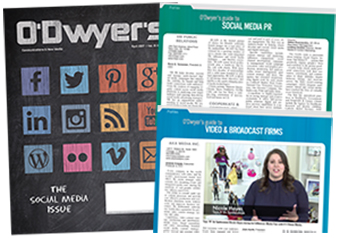|
|
The traditional models of developing effective creative no longer work in today’s on-demand media landscape. Technology has enabled a meteoric rise in content consumption, forcing marketers to adopt new ways of creating and publishing content to engage their audiences, while staying on message and on budget. Brands must be nimble enough to join same-day conversations relevant to their product or service, while still making time for big ideas that will surprise and delight.
|
|
Here are eight content marketing tips that can help you develop effective content that moves the needle.
Stop right now and codify your content strategy. This will be your content bible, to be used across the organization. It’s an essential step to staying agile. According to a recent Content Marketing Institute study, 60 percent of those who have a documented content strategy rate themselves highly in terms of content marketing effectiveness, compared with 32 percent of companies who have only a verbal strategy. A content marketing strategy lays out:
--Primary audiences, objectives and key performance indicators.
--Brand positioning, voice and personality.
--Purpose and key messages.
--Content themes, language guardrails and design tenets.
--Content formats, types and series.
--Channel strategy detailing distribution based on platform-specific objectives.
--Content workflow and roles/-responsibilities.
Read more than you write. Always be sure you know what keeps your audience up at night. To pique someone’s interest, you must appeal to their needs, wants and desires. This requires understanding their pain points, what they need help on and what makes them tick. It’s hard to become a subject matter expert overnight, but reading about your audience is a good place to start. If budget allows, consider in-depth interviews to gain additional insights.
Keep an eye on your competitors, peers and industry influencers. Social listening and competitive analysis tools such as Crimson Hexagon, Sysomos, TrackMaven and others can evaluate share of voice and conversation volume, as well as the sentiment and emotion of chatter. With these insights, you can create content people will care about. If tools aren’t available, a manual audit of owned and shared channels can provide valuable insight into how allies and competitors are operating. Also, try free services such as Yahoo Answers, Buzzsumo and Quora that enable you to search keywords to uncover related topics and current content generating buzz.
Set meaningful measures of success. In an ecosystem where organic reach is rapidly declining, the number of likes and followers are a diminishing part of the equation. Instead, focus on driving more conversation around a specific topic aligned with your mission, or increasing the number of positive brand mentions. Identify goals for the volume and type of original content you want to publish, versus curated and/or user-generated content, and then hold yourself accountable.
It’s a marathon, not a sprint. To achieve a brand’s specific marketing goals, like new email subscribers or driving sales of a product, your content will need to guide people slowly down the path to conversion. How often do you buy the first pair of shoes you see or commit to a new membership without first taking time to review your options? Rarely. Brands must remember this human tendency and bring awareness and education to their customers before making the final ask.
Your 7th grade English lesson is still relevant. What you learned in middle school about story structure also applies to content marketing. All stories have a beginning, middle and end. The best stories are authentic and have an emotional hook. And be sure to set that hook as close to the beginning as possible. Content works when it comes across as real and personal.
Think mobile. According to eMarketer, the number of mobile-only Internet users will more than double the number of desktop/laptop users this year, underscoring the necessity to create better mobile experiences. Content must be simple enough for users to get the key message in the first few seconds. Focus on colors that stand out across formats and use one call-to-action at a time. Consider formats that are optimized for the mobile viewer, such as vertical video, which Facebook rolled out last month to all users in the Facebook app newsfeed. And test your content on a variety of devices and platforms before publishing.
It’s not all about you. By sharing and repurposing great content from others aligned with your mission, you can minimize work effort while extending your brand into new places. People follow brands and organizations not just for their original content, but also because they’re effective aggregators of the issues and topics important to them. Share content from influential publishers to increase the chance that those influencers will promote your content.
With these tips as part of a foundational plan, your content process of ideation, development and deployment can become a well-oiled machine. Always remember, great content is as much an art as a science. And embracing the energy that comes with content creation and publishing cycles is something that can be mastered.
I don’t consider it stress, just another perk of a good day in content marketing.
***
Lindsey Goebel is Director of Social Media & Content Marketing at Crosby.

 Lindsey Goebel
Lindsey Goebel

 What if companies could harness the fury of online outrage into a force for good? This is precisely where companies can start turning the trolls into brand champions.
What if companies could harness the fury of online outrage into a force for good? This is precisely where companies can start turning the trolls into brand champions. Audiences interacted with brand content far more often on Facebook and Instagram in 2023 than they did via X (formerly Twitter), according to a report that tracked engagement trends across different social networks.
Audiences interacted with brand content far more often on Facebook and Instagram in 2023 than they did via X (formerly Twitter), according to a report that tracked engagement trends across different social networks. Can public relations help counteract the dissension fostered by the power of digital platforms to spread hate, fear and confusion?
Can public relations help counteract the dissension fostered by the power of digital platforms to spread hate, fear and confusion? The number of Americans who get their news from TikTok has quadrupled in the last three years, according to a recent Pew Research Center report.
The number of Americans who get their news from TikTok has quadrupled in the last three years, according to a recent Pew Research Center report.


 Have a comment? Send it to
Have a comment? Send it to 
No comments have been submitted for this story yet.